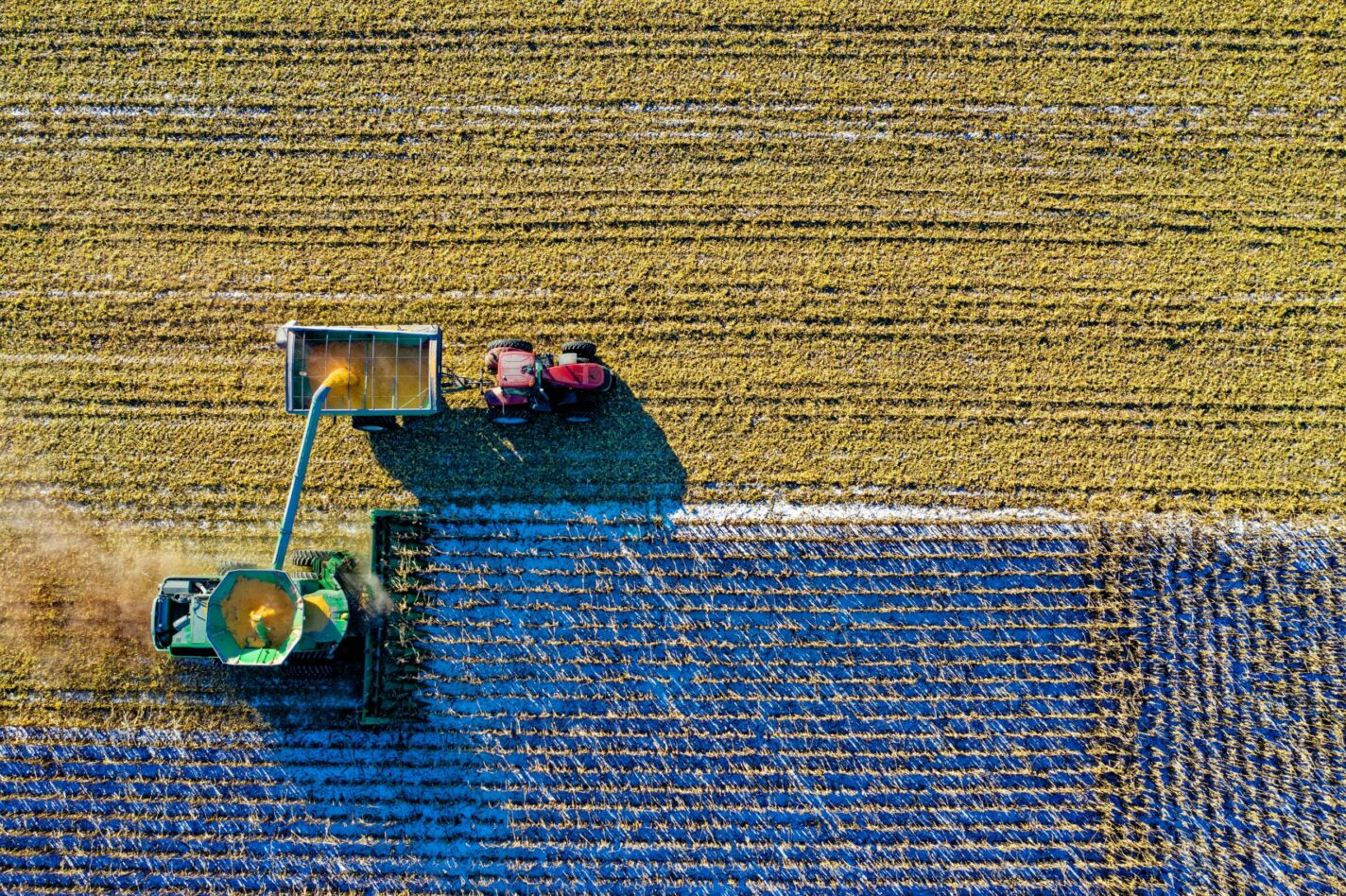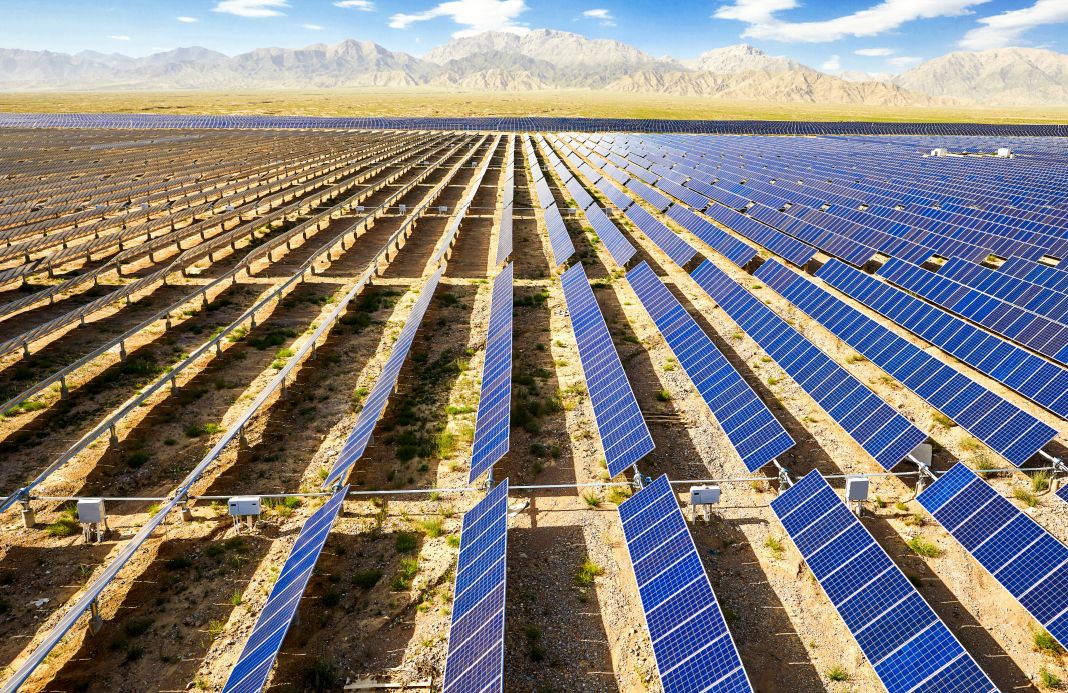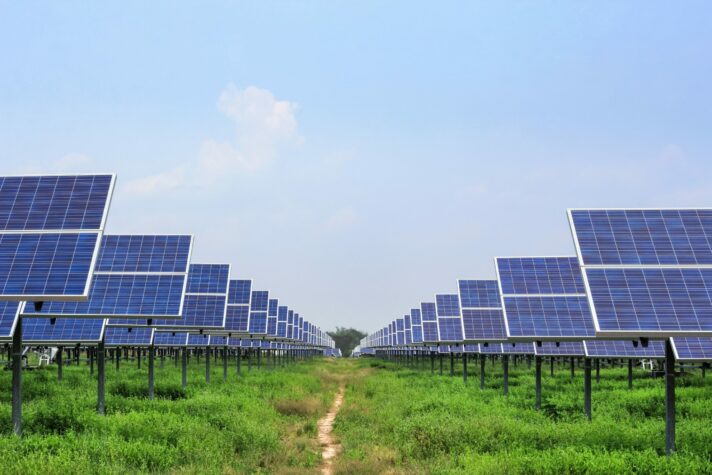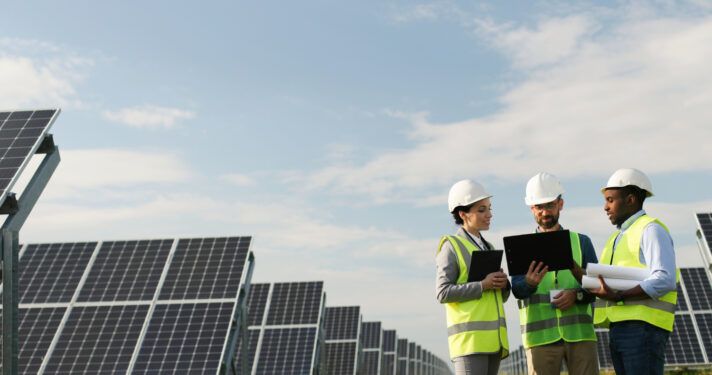By Garrett Gill, VP of Land
The farming and solar energy industries may appear to be at odds with each other regarding land use – both need large land positions in order to succeed. That said, solar developers and farmers have been working together for decades, forming mutually advantageous partnerships. Recent studies have found that co-locating solar energy generation facilities with active agriculture (sometimes referred to as “agrivoltaics”) can provide a wide range of benefits for crop production and pollinator habitat as well as environmentally responsible local economic development.
Many farmers are not aware of the full scope of benefits, and may not even know that leasing their land for solar projects is an option. A partnership with a solar development company could be exactly what today’s farmers need to address mounting financial challenges.
A Shifting Agricultural Landscape
In recent years, farmers across the United States have struggled with water sourcing. Drought conditions have made it difficult to properly maintain crop output without significant cost.
Throughout 2021 and 2022, farmers are feeling the squeeze of inflation. Their operating margins are shrinking as they must pay far more for weed-killing chemicals, crop seeds, fertilizer, equipment repairs and seasonal labor. Cost inputs have become harder to control, and swings in commodity prices have left farmers on uncertain financial footing.
This environment has incentivized farmers to seek additional, more reliable sources of revenue, including partnerships with solar power companies.
Benefits for Farmers and Their Community
The key benefits farmers can gain from a solar partnership include:
- Reliable revenue stream. Revenue from leasing farmland for utility-scale solar project development can provide a stable source of annual income measured in hundreds of thousands, or even millions of dollars, depending on acreage. The solar project pays for taxes associated with the energy facilities on the leased land.
- Long-term partnership. Partnerships with solar projects can last over 40 years. Decades of guaranteed revenue will help farmers hedge against commodity cycles and navigate industry consolidation challenges.
- Outside-the-box land use. A non-traditional farmland use option can be especially appealing to those who newly inherited or acquired the land.
- Building a legacy. The partnership provides an opportunity to build wealth and create a long-term legacy for generations to come.
- More water production. Solar arrays not only reduce water use, they can allow groundwater to recharge, leading to increased natural water production over time.
- Community support. Solar projects increase the tax base within the community, create jobs, and can even benefit schools.
- Clean, low-cost energy. Solar projects offer an environmentally sustainable use of land resources, reduced energy costs for local homes and businesses, and reduced greenhouse emissions (compared to traditional energy generation).
Farmers and Solar Developers: A Long and Meaningful Partnership
Solar developers have a long history with the farming community. Since the 1980s, solar companies have been working with farmers of all sizes–from large high-volume agricultural producers to mid-size farms to small family-owned operations. Due to technological advancements in the solar industry, the size and scale of solar projects on farmland have greatly increased in the past five years.
Utility-scale solar companies have been leasing land from farmers for clean energy facilities that typically require 500 to 2,000 acres. Farmland underneath or near electric transmission lines is particularly appealing to solar developers because the land often requires little to no dirt work to prepare for installation.
Addressing Common Questions and Concerns
Farmers, understandably, have questions about the potential impact of solar projects on their land. Solar developers work closely with landowners to ensure all concerns are addressed before installation begins.
- Impact to farm output. If crop production is impacted during the development of a solar project, the solar developer will ensure that the lost yield is compensated. During the operating period of the project, the farmer will receive more revenue through the solar partnership than the foregone crop production.
- Reduction in prime cropland. Solar developers are thoughtful about the land they install on and are sensitive to crop needs. They are seeking underutilized, marginalized farmland that can be optimized through solar partnerships. Solar developers do not go after fertile land that could be used for high-yield crops
- Reputation of entities. Some farmers are worried about working with reputable entities and need assurance that if something were to happen, the farmers would get their land back and the land would be restored to its original use. Prominent and experienced companies such as Redeux Energy can be trusted to maintain and restore all leased land at the conclusion of the project.
- Coexistence with oil & gas activities. Farmers should be able to maximize revenue by leasing their mineral rights to oil & gas companies and their surface rights to solar developers. The two energy producers can easily coexist on shared farmland.
- Concerns about proximity to homes, viewshed. During the development process, all concerns about the proximity and viewshed of the panels are addressed. Developers collaborate with landowners and community members to ensure agreement and comfort.
Growing Opportunity
The farming and solar industries can help each other grow. If developed strategically, solar panels can boost farm and crop productivity:
- Agrivoltaics save water and energy while improving animal welfare
- Planting pollinator-friendly plants under the panels, including native grasses and wildflowers, can improve crop production
- On hot summer days, solar panels provide shade that lower temperatures and could benefit crops
As solar technology advances, farmers and solar developers will find even more ways to work together and build mutually beneficial partnerships.
Are you interested in learning more? Get in touch today.





